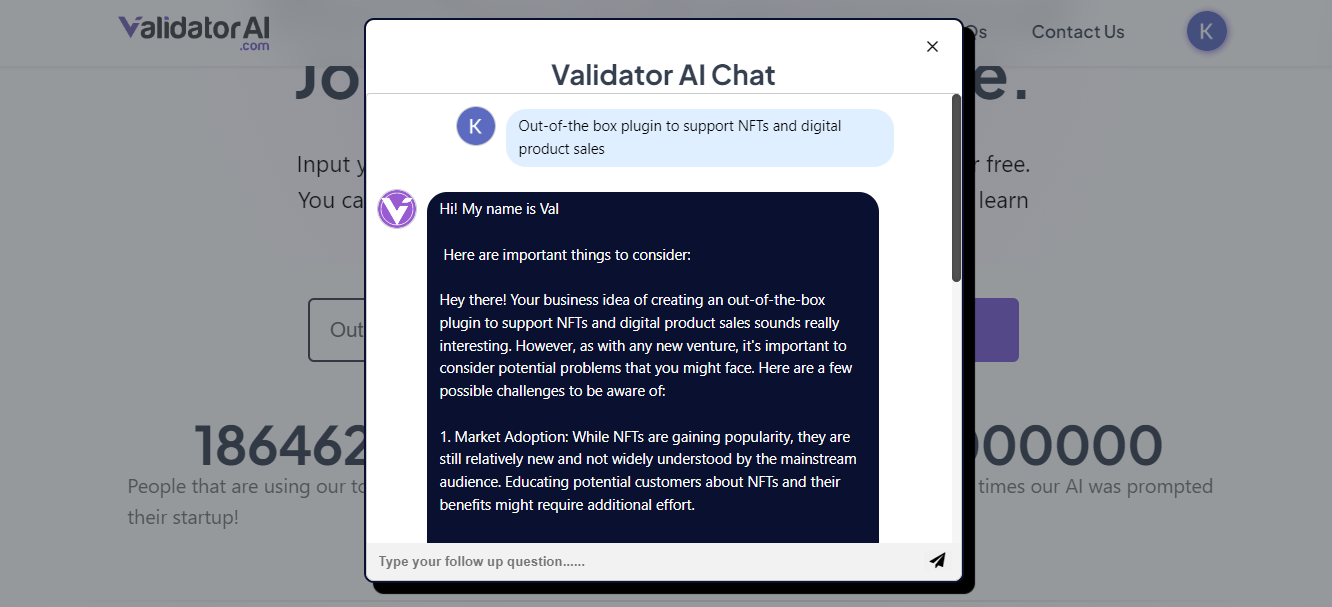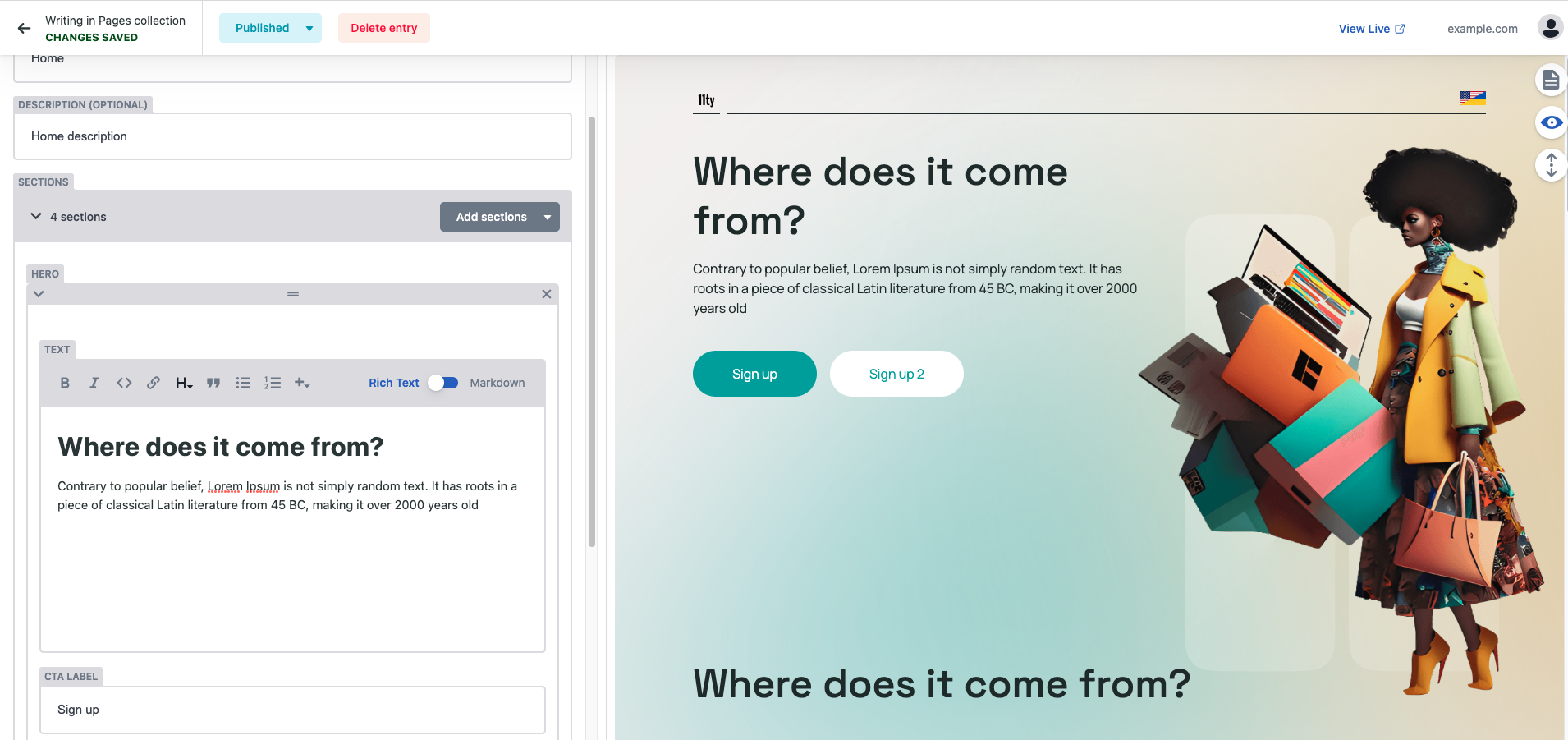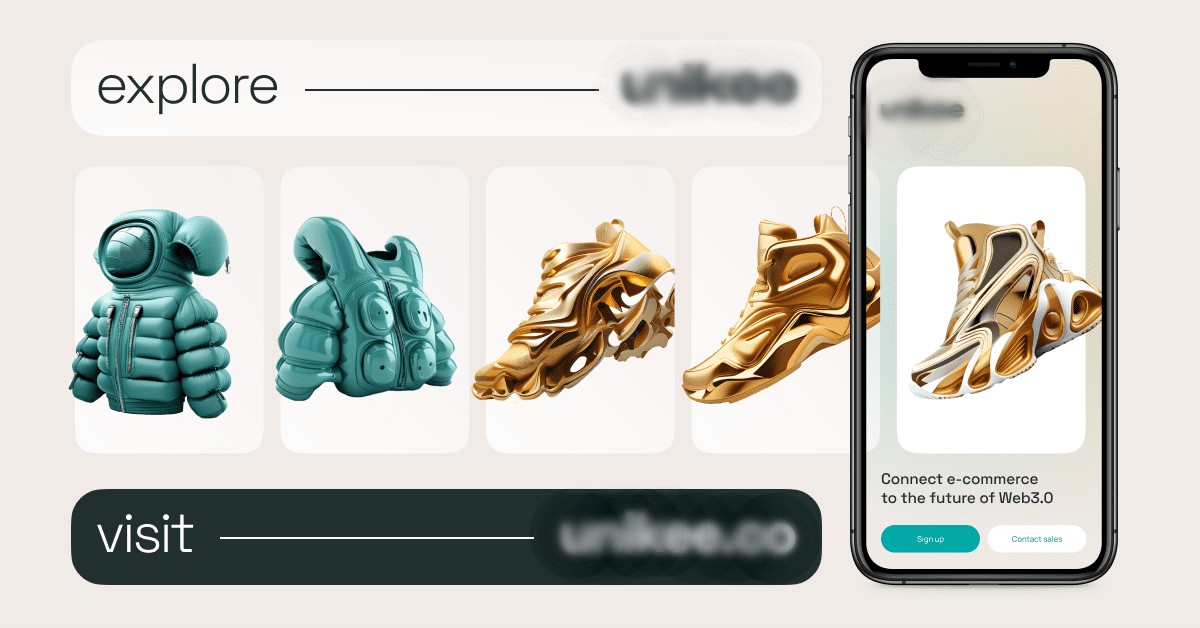So, you've got an idea, a spark of innovation that could be the foundation for the next big thing in the business world. But there's a crucial step before you can attract the attention of investors and turn that idea into reality. It's called "validation," and in simple terms, it means making sure your idea is not just a wild guess but has the potential to succeed in the real world.
At Moqod, we've ventured down this entrepreneurial path before, but this time, we decided to take a different approach. We wanted to see how far we could go by harnessing the power of artificial intelligence in the validation process. What we discovered was both fascinating and instructive. In the following chapters, we'll share our journey and the valuable lessons we learned from this experimental fusion of innovation and technology.

The Validation Cycle
In the quest to validate a startup idea with the assistance of AI, efficiency is paramount. The goal is clear: to determine early on whether the concept is viable while conserving both time and financial resources. Recognizing the limitations of an idea is not a failure; the true failure lies in failing to derive valuable insights from the experience.
To expedite the validation process, a well-structured cycle composed of four crucial steps is indispensable:
Step 1 — Outline the Goal
Begin by defining your ultimate objective. This initial step serves as a compass, guiding your efforts throughout the validation journey. It enables you to maintain a clear focus on what you aim to achieve.
Step 2 — Create a Set of Hypotheses
Hypotheses act as the building blocks of your validation strategy. Develop a comprehensive set of hypotheses that outline your assumptions about the market, target audience, and the problem your startup intends to solve. These hypotheses will be the foundation upon which your experiments are built.
Step 3 — Now Experiment!
With hypotheses in place, it's time to execute experiments that challenge these assumptions. These experiments may involve surveys, interviews, prototype testing, or other validation techniques. The objective is to gather data and insights that either confirm or refute your hypotheses.
Step 4 — Process the Results
The final step involves a meticulous analysis of the results obtained from your experiments. This critical phase allows you to draw meaningful conclusions. If your hypotheses are validated, you can proceed with greater confidence. If not, you'll need to adjust your approach or pivot your idea.
In this validation cycle, the key is agility and adaptability. The earlier you identify a flawed concept, the quicker you can redirect your efforts toward one that holds promise. By rigorously following these four steps, you'll be equipped to make informed decisions and maximize the potential for success in the volatile startup landscape. Remember, each iteration of this cycle brings you closer to a winning idea, saving valuable resources for future endeavors.
Finding Product-Market Fit
Product-market fit is closely related to the validation process, representing the ultimate validation of a startup's idea or product. In essence, validation is the journey that leads to product-market fit. It's the process of confirming that your idea has found its place in the market and resonates with customers, ultimately paving the way for sustainable growth and success.
Achieving product-market fit is the holy grail for startups. It signifies the harmonious alignment of your product with the needs and desires of a target market. While the concept may seem straightforward, the journey to find this elusive fit is often riddled with complexities, demanding relentless trial and error.
Validation Techniques
A diverse arsenal of validation techniques is essential to uncover product-market fit. Here are some key approaches:
- Surveys: In the early stages, surveys help validate hypotheses by gathering input from a significant number of potential users. This quantitative data provides valuable insights.
- Customer Interviews: Dive deep into the primary needs of potential users through one-on-one interviews. These qualitative interactions yield a nuanced understanding of your target audience's pain points and preferences.
- Prototypes: Develop prototypes to collect initial feedback without incurring significant development costs. This step allows you to refine your product iteratively.
- Pre-sales: When uncertainty looms over whether anyone will pay for your product, consider pre-sales. It's a strong indicator of genuine interest and demand.
- Product Tests: In cases where user behavior patterns remain unclear, conduct product tests. Observe how real users engage with your product to gather insights for improvement.
- Growth Tests: Assess the growth potential of your product through controlled experiments. Determine whether it can scale effectively and sustainably.
- MVP Development and Testing: If doubts persist regarding technical implementation, create a Minimum Viable Product (MVP) and test it in the market. This approach helps you validate your concept with minimal resources.
By skillfully employing these validation techniques, startups can navigate the intricate landscape of market validation, ultimately honing in on the elusive sweet spot where product and market seamlessly converge.
Our Corporate Startup Case
In our corporate startup journey, we embarked on a mission to develop a SaaS product tailored for the retail industry. This innovative solution aimed to empower medium-sized companies by harnessing the potential of Web3 technologies to attract and engage their user base.
Our path to success followed a strategic framework encompassing several crucial phases:
Market and Competitor Analysis
We began by meticulously analyzing the market landscape and studying our competitors. This essential groundwork helped us identify gaps and opportunities.
To ensure comprehensive understanding, we deliberately opted for manual analysis, foregoing the use of AI tools. This hands-on approach allowed us to immerse ourselves fully in the intricacies of the market.
However, recognizing the potential of AI in streamlining and enhancing our validation process, we experimented with a select range of AI tools designed to provide valuable insights at this critical stage:
- Seenapse: This tool empowered us to generate a multitude of divergent ideas, fostering creativity and innovation in our approach.
- ValidatorAI: As a versatile AI business validator, it lent valuable support to scrutinize and assess the viability of our ideas.
- Dimeadozen: This tool became a reliable companion in the validation journey, assisting us in rigorously evaluating the potential of our business concept.

Customer Research
It's worth noting that Phantombuster has since incorporated AI functionality, elevating LinkedIn automation to new heights. However, it's important to clarify that these advanced AI features were not yet available during our active usage.
While exploring the realm of AI for customer research, we identified several promising solutions that, although not used in our specific case, are noteworthy for their potential:
- Synthetic Users: Offering AI-powered user research with AI participants, this tool opens doors for innovative research methodologies.
- Kraftful: Providing automated summaries of user reviews, Kraftful streamlines the process of distilling valuable information from customer feedback.
- Userdoc AI: Offering AI-driven user personas, journeys, and requirements, Userdoc AI promises to enhance user-centric research.
- Ask Viable: By automating qualitative data analysis, Ask Viable represents a valuable asset for deepening customer understanding.
While we tailored our approach to our specific goals, the expanding landscape of AI tools offers diverse avenues for businesses to explore and refine their customer research strategies.
MVP Website Creation
With a deep understanding of our market and target audience, we proceeded to create a Minimum Viable Product (MVP) site for product presentation. While our staff designer handled the design aspect, ChatGPT played a pivotal role in crafting compelling textual content. Simultaneously, we integrated AI tools like Midjourney to enhance the overall user experience.
What other tools can you utilize for website creation besides the widely recognized ChatGPT and Midjourney that have gained widespread popularity?
- ParagraphAI: A writing tool that assists in creating engaging and impactful content.
- Perplexity AI: A writing tool with source integration for well-informed and authoritative content generation.
- Uizard: A design tool that transforms wireframes into interactive prototypes, simplifying user interface and experience design.
- SourceAI: An AI-powered coding tool for streamlined development, code generation, and workflow optimization.
- GitHub Copilot: A real-time code suggestion and autocompletion tool enhancing coding efficiency and accuracy for startups.

Explore the full article to learn how we developed a cost-effective website for this case with zero infrastructure expenses>>
Social Media Engagement
Recognizing the significance of an online presence, we established a strong foothold on social media platforms. Here, AI took center stage again, with ChatGPT contributing to creating engaging posts and compelling Calls to Action (CTA). Visual content was enriched by the artistic touch of Midjourney, and sometimes we used Canva. Remarkably, all content on our social media pages was generated by AI.
In our pursuit of innovation and creativity, we've ventured beyond the conventional and embraced a range of AI tools that offer unique capabilities, each designed to elevate different facets of our content creation journey. While not all of these tools were employed in our specific case, they present intriguing possibilities for diverse stages of content development:
- AdCreative: Unleash your advertising prowess with AdCreative, a tool designed to craft captivating ad creatives and social media posts using the power of AI. It opens up avenues for startups to design attention-grabbing campaigns that resonate with their target audience.
- Jasper: With Jasper, the world of marketing content creation knows no bounds. This versatile tool empowers you to generate various types of marketing content effortlessly. For startups seeking to establish a strong brand presence, Jasper offers a dynamic solution.
- Canva's Text to Image: Canva's AI photo generator is a game-changer for image and art creation. By transforming text prompts into unique visuals, it enables startups to produce AI-generated images swiftly and efficiently, ensuring each piece of content stands out.
- Bard by Google: As an alternative to ChatGPT, Bard enters the scene as a versatile AI companion for crafting posts and content. With its capabilities, startups can diversify their content generation and storytelling efforts, breathing fresh life into their narratives.

The advertisement image crafted in collaboration with Midjourney (the product's name is concealed).
Advertising Challenges
Our advertising efforts extended to platforms like Twitter, Meta, and Google. However, we encountered hurdles as our advertising accounts on Twitter and Google were inexplicably blocked. Despite these setbacks, we persevered and managed to test several hypotheses and messaging strategies.
Testing the Target
As we navigated through the early stages of our startup journey, certain critical elements demanded testing:
- Audience Demographics: Regularly analyze the demographics of your target audience to ensure your product aligns with their evolving characteristics and preferences.
- Geolocation: Geographical factors can significantly impact user behavior and needs. Continuously assess geolocation data to tailor your strategies accordingly.
- Ad Placements: The effectiveness of ad placements can change over time. Experiment with different platforms and positions to identify what resonates best with your audience.
- Visuals: Visual content plays a pivotal role in capturing attention. Regularly test and refresh visuals to maintain engagement and relevance.
- Messaging: The way you communicate your value proposition can make or break your startup. Continuously refine your messaging to resonate with your audience's evolving expectations.
Our journey was marked by an exciting development: the acquisition of our first contacts among potential customers. These initial connections paved the way for deeper engagement, allowing us to gather detailed information about their needs and desires concerning our product.
The data collected from initial contacts serves as a roadmap for improvement. We analyzed this data to identify patterns, pain points, and areas of opportunity. Then, implement changes in your Minimum Viable Product (MVP) and testing strategies based on these insights.
Thus, armed with this valuable data, we embarked on a cycle of refinement. We diligently incorporated changes to our MVP based on the received insights, and then we started the testing cycle anew.
Conclusion
In the dynamic landscape of the startup ecosystem, triumph depends on the capacity to learn, adapt, and perfect. Continuous testing and refinement are not merely tasks but fundamental tenets ingrained in the essence of every thriving startup. Time is of the essence.
As we ventured to validate a new product hypothesis and swiftly create an MVP website, our project was collaborative, uniting a marketer, a designer, and a powerful ally — Intelligence. Tools like Midjourney, ChatGPT, and others propelled our progress, accelerating text and visual tasks by an impressive 50%. It's worth noting that while AI played a significant role, everything generated by AI was meticulously managed and validated by human expertise. This harmonious blend of human expertise and AI innovation underscores the pivotal role of adaptability and innovation in navigating the ever-shifting currents of the startup world.







